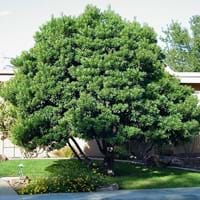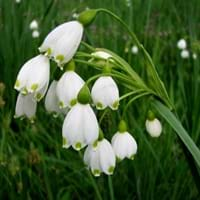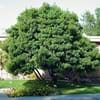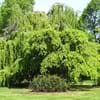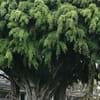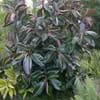Life Span
Perennial
Perennial
Type
Tree
Bulb or Corm or Tuber
Origin
China, Japan
Europe, Mediterranean, Northern Africa, Western Asia
Types
it is a type of blueberry
Not available
Habitat
Not Applicable
Damp shady woods, Hedgebanks, Mediterranean region
USDA Hardiness Zone
9-11
Not Available
AHS Heat Zone
11-5
Not Available
Sunset Zone
H1, 8, 9, 14, 15, 16, 17, 18, 19, 20, 21, 22, 23, 24
21,22
Habit
Upright/Erect
Clump-Forming
Minimum Width
Not Available
Flower Color
White
White, Light Pink
Flower Color Modifier
Bicolor
Bicolor
Fruit Color
Dark Blue, Black
Not Available
Leaf Color in Spring
Green, Dark Green, Bronze, Orange Red
Green
Leaf Color in Summer
Dark Green
Light Green
Leaf Color in Fall
Dark Green
Several shades of Green
Leaf Color in Winter
Red, Dark Green
Light Green
Leaf Shape
Crescent-shaped
Strap shaped
Plant Season
Spring, Summer, Fall
Spring, Summer, Fall, Winter
Sunlight
Full Sun, Partial Sun
Full Sun, Partial Sun, Partial shade
Type of Soil
Loam, Sand
Loam, Sand
The pH of Soil
Acidic, Neutral
Acidic, Neutral, Alkaline
Soil Drainage
Average
Well drained
Bloom Time
Late Spring, Early Summer
Early Spring, Spring, Late Spring, Early Summer, Late Summer, Winter, Late Winter
Tolerances
Not Available
Drought, Light Frost, Variety of soil types
Where to Plant?
Ground
Ground, Pot
How to Plant?
Rooted stem cutting, Seedlings
Divison, Seedlings, Seperation
Plant Maintenance
Low
Low
Watering Requirements
Requires watering in the growing season, Water when soil is dry
Needs less watering
In Summer
Lots of watering
Lots of watering
In Spring
Moderate
Moderate
In Winter
Ample Water
Average Water
Soil pH
Acidic, Neutral
Acidic, Neutral, Alkaline
Soil Type
Loam, Sand
Loam, Sand
Soil Drainage Capacity
Average
Well drained
Sun Exposure
Full Sun, Partial Sun
Full Sun, Partial Sun, Partial shade
Pruning
Prune in winter, Prune when young, Remove branches, Remove short twigs
Remove damaged leaves, Remove dead branches, Remove dead leaves
Fertilizers
All-Purpose Liquid Fertilizer, Fertilize in early spring, Mulch
Bulb fertilizer
Pests and Diseases
Black Silt, Leaf rust, Sooty Mold
Narcissus Bulb Fly, Slugs
Plant Tolerance
Not Available
Drought, Light Frost, Variety of soil types
Flower Petal Number
Single
Single
Foliage Texture
Medium
Fine
Foliage Sheen
Glossy
Matte
Attracts
Birds
Ants, Bees, pollinators
Allergy
Not Available
Not Available
Aesthetic Uses
Bonsai, Showy Purposes
Beautification, Bouquets, Cottage Garden, Ground Cover, Showy Purposes
Beauty Benefits
For treating wrinkles, Skin Problems
Anti-ageing
Environmental Uses
Air purification, Shadow Tree
Air purification
Medicinal Uses
Bone strength, Cancer, Diabetes, Digestion problems, Heart problems, High blood pressure, Improving mental health, Vitamin C, Weight loss
Alzheimer’s Disease
Part of Plant Used
Fruits
Flowers, Root
Other Uses
Edible syrup, Employed in herbal medicine, Used As Food, Used as Ornamental plant
Used as Ornamental plant
Used As Indoor Plant
No
No
Used As Outdoor Plant
Yes
Yes
Garden Design
Hedges, Screening / Wind Break, Shade Trees, Street Trees
Alpine, Container, Cutflower, Lawns and Turf, Mixed Border, Rock Garden / Wall, Wildflower
Botanical Name
ELAEOCARPUS decipiens
Leucojum aestivum
Common Name
Japanese Blueberry
Leucojum, summer snowflake
In Hindi
जापानी ब्लूबेरी
Leucojum
In German
japanische Blaubeere
Leucojum
In French
bleuet japonais
Leucojum
In Spanish
arándanos japonés
Leucojum
In Greek
ιαπωνική βατόμουρου
Leucojum
In Portuguese
blueberry japonês
Leucojum
In Polish
Japoński borówki
Leucojum
In Latin
Vaccinium Italica
Leucojum
Phylum
Not Available
Magnoliophyta
Class
Not Available
Liliopsida
Order
Oxalidales
Liliales
Family
Elaeocarpaceae
Liliaceae
Genus
Elaeocarpus
Leucojum
Clade
Angiosperms, Eudicots, Rosids
Angiosperms, Monocots
Tribe
Not Available
Not Available
Subfamily
Not Available
Amaryllidoideae
Importance of Japanese Blueberry and Leucojum
Want to have the most appropriate plant for your garden? You might want to know the importance of Japanese Blueberry and Leucojum. Basically, these two plants vary in many aspects. Compare Japanese Blueberry and Leucojum as they differ in many characteristics such as their life, care, benefits, facts, etc. Every gardener must at least have the slightest clue about the plants he wants to plant in his garden. Compare their benefits, which differ in many ways like facts and uses. The medicinal use of Japanese Blueberry is Bone strength, Cancer, Diabetes, Digestion problems, Heart problems, High blood pressure, Improving mental health, Vitamin C and Weight loss whereas of Leucojum is Alzheimer’s Disease. Japanese Blueberry has beauty benefits as follows: For treating wrinkles and Skin Problems while Leucojum has beauty benefits as follows: For treating wrinkles and Skin Problems.
Compare Facts of Japanese Blueberry vs Leucojum
How to choose the best garden plant for your garden depending upon its facts? Here garden plant comparison will help you to solve this query. Compare the facts of Japanese Blueberry vs Leucojum and know which one to choose. As garden plants have benefits and other uses, allergy is also a major drawback of plants for some people. Allergic reactions of Japanese Blueberry are Not Available whereas of Leucojum have Not Available respectively. Having a fruit bearing plant in your garden can be a plus point of your garden. Japanese Blueberry has showy fruits and Leucojum has no showy fruits. Also Japanese Blueberry is not flowering and Leucojum is not flowering . You can compare Japanese Blueberry and Leucojum facts and facts of other plants too.
